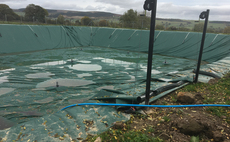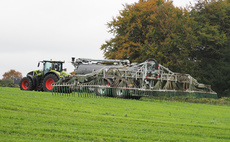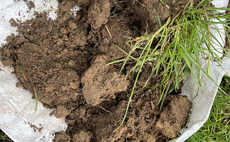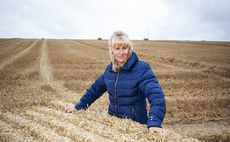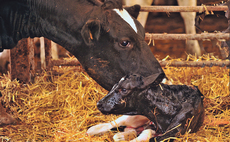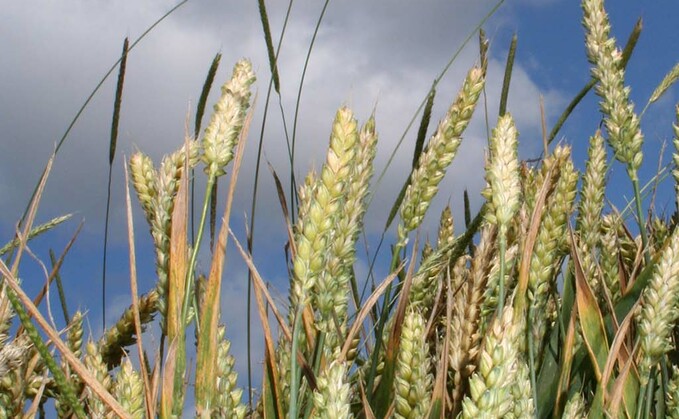
BASF’s Luximo looks set to give wheat growers fresh hope in the black-grass battle.
Now fully GB-available, Luximo (cinmethylin), BASF's new grassweed control active available as the herbicide Luxinum Plus, looks set to give wheat growers fresh hope in the black-grass battle.
Now fully GB-available, Luximo (cinmethylin), BASF's new grassweed control active available as the herbicide Luxinum Plus, looks set to give wheat growers fresh hope in the black-grass battle.
But only sound stewardship will ensure good season-long results and long-term efficacy.
While its activity is impressive, it must be at the heart of an integrated programme of weed prevention and risk minimisation measures to ensure its long-term efficacy, suggests the firm, a message supported by agronomists.
John Cussans, NIAB weed biology and management specialist, says: "Given other actives' reductions in performance over recent years, Luximo represents a fantastic opportunity to form a black-grass control strategy from a new building block.

Efficacy
"While its inherent efficacy is very high, that does not mean that as individual farm businesses or as an industry we can ease off other integrated grassweed management measures.
"Prior experience has taught the industry not to rely on herbicides in isolation.
"Luximo is not a silver bullet and does not change sound husbandry fundamentals which must still be followed to get the best overall control.
"Black-grass thrives in our typical high-yielding UK wheat-growing environment of heavy, moisture-retentive soils. To address this, the basis for tackling bad black-grass situations has to be cultural controls first, supplemented by a herbicide.
"The most useful are competitive varieties and delayed drilling. While holding off in good weather is hard, the flipside of much higher weed pressure will cancel out any potential yield gain.
"With black-grass becoming established in the crop, rather than largely before it, you set off on the back foot, with seed return worsening the problem down the line."
John says his impression of the first season with Luximo is that growers have taken a measured approach to its use and, alongside agronomists, have a better-developed understanding about tackling black-grass, particularly integrated management, to achieve good results short-term and protect product efficacy long-term.
He says: "Black-grass issues can vary widely from field to field, but this past autumn, because it had been so dry, drilling date was even more influential than usual.
"Farmers who drilled too early struggled to achieve good control, while those delaying and adopting a more risk-based approach benefited."
Factors such as weed history, drilling date and crop competition will always come before chemistry used, and a new active does not change this, says John, but as a much-needed new option to provide the chemical element of control, Luximo has delivered on its promise during its first full commercial year.
Risk management
He says: "As an industry, we have become better at individual field risk management.
"So far this season, a broad judgement of crops in key black-grass areas would suggest that while control in fields with a difficult black-grass history was not helped by the dry, they are the minority, and where Luxinum Plus applications were well-timed pre-emergence, they appear to have performed well.
"Any initial concerns about temptations to let the product do all the work appear to have been unfounded.
"Grassweed management is about risk assessment and prioritisation.
"Putting fields in order of winter cropping suitability is a good first step - there will be some which should be put down to a winter cereal crop, for example."
John urges growers to recognise that control does not end with what happens immediately post-drilling, though.
"With some challenging early growing conditions and a cold, late spring, crops which benefited from a decent level of autumn weed control may still face challenges from thin canopies which hence do not provide good levels of weed suppression through the rest of the year.
"Assess your known problem fields and map patches where possible.
"If your black-grass populations are in defined patches, this may be a year for hand roguing to minimise seed return and spread.
"This can be especially successful where there are relatively few plants but they are relatively large. If you have a sea of plants though, roguing probably is not going to be easy or effective.
"Remember that it is possible to have 60 tillers per plant, that one plant can set eight to 10 heads and that each head can set 100 seeds.
"Preventing as much seed return as possible is essential.
"I think that with good results from the first full season with Luximo we have good grounds to be optimistic for 2023-2024, but again it is not a magic solution and using it as part of integrated control will be essential.
"Autumn is always pressured, so prioritising fields will be just as important."
Examine each field's issues individually, identify those with the highest pressure and prioritise them for stale seedbeds, sprayed-off flushes, delayed drilling and timely pre-em spraying.
"As an industry, we have been eulogising about integrated weed management for many years.
"I think we are now in a better place and if we complement Luximo's abilities with those cultural controls, we will benefit considerably."
Delayed drilling
Potential Matt Keane, BASF's agronomy manager in East Anglia, says the serious black-grass burden in some areas of his region made it a good place to not only test Luximo's capabilities, but also underline how important it is to use it as part of an integrated programme of controls.
He says: "Delayed drilling is a prime example.
"As we have done for the past couple of years, we are running split field trials here in the East, comparing late September and late October sowings on a Suffolk field containing a consistent high black-grass population of 300-400 heads/sq.m in untreated areas.
"Where we applied Luxinum Plus at the standard rate and recommended pre-emergence timing, we have achieved control levels of 95-98% in the October-drilled plots."
Although a vital step for good control, herbicide applications should be considered your last line of defence, says Matt.

"It is that delayed drilling which really provides the foundation on which to build everything else and minimises the population to which you are exposing the crop and the herbicide.
"Hold on until mid-October if you can, use stale seedbeds, ensure the crop seedbed quality is good - especially if after roots like late-lifted beet - and seed depth is correct, then the herbicide has the best chance to produce the best results.
"Nominal autumn cut-off for Luxinum Plus pre-em use is November 15. Although guidance rather than a label statement, seedbeds after this are likely to be poorer and will not work so well.
"Either wait for the crop to emerge and apply post-emergence, or switch to a spring crop instead.
"Spraying tight behind the drill - within 48 hours if possible - will always produce the best control levels. But while post-em results will rarely be anywhere near as good, if necessary Luximo can be used up to GS30 and it is still the most effective product post-emergence up to this timing."
Mode of action
Stu Kevis, BASF UK technical lead for cereal herbicides, says one of the key pluses of Luximo is that it is not just a new active ingredient against grassweeds, but works via a mode of action not previously used for grassweed control in cereals.
He says: "The molecule was actually discovered in the late 1970s by North American scientists working on research into annual meadow grass control, but its development was not taken further at the time for that purpose in that region.
"Although its use was commercialised in Asia in rice, it was never marketed in Europe.
"But just over a decade ago, during research into black-grass control, our development scientists revisited the molecule and found during screening that it had a particularly interesting effect on black-grass, as well as Italian ryegrass, when used pre-emergence as a soil-acting residual."
Under the recently revised Mode of Action Classification System for Herbicides, Luximo/cinmethylin sits with just one other non-commercial molecule in HRAC Group 30, which describes the inhibition of the fatty acid thioesterase enzyme which is critical to the development and maintenance of the plant cell membrane, says Stu.
For more information
For more information, please visit agricentre.basf.co.uk/luximo or any of our social media channels.














